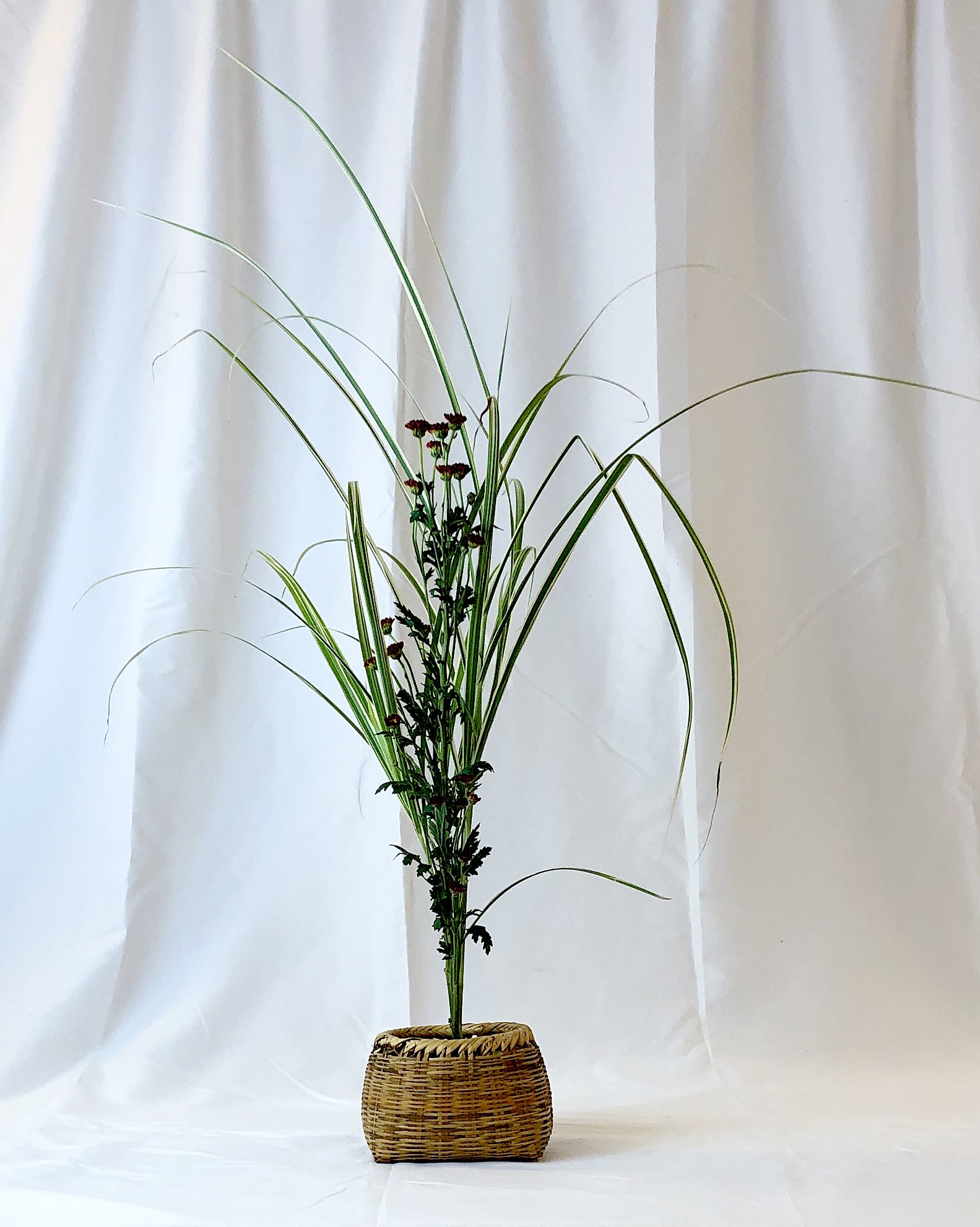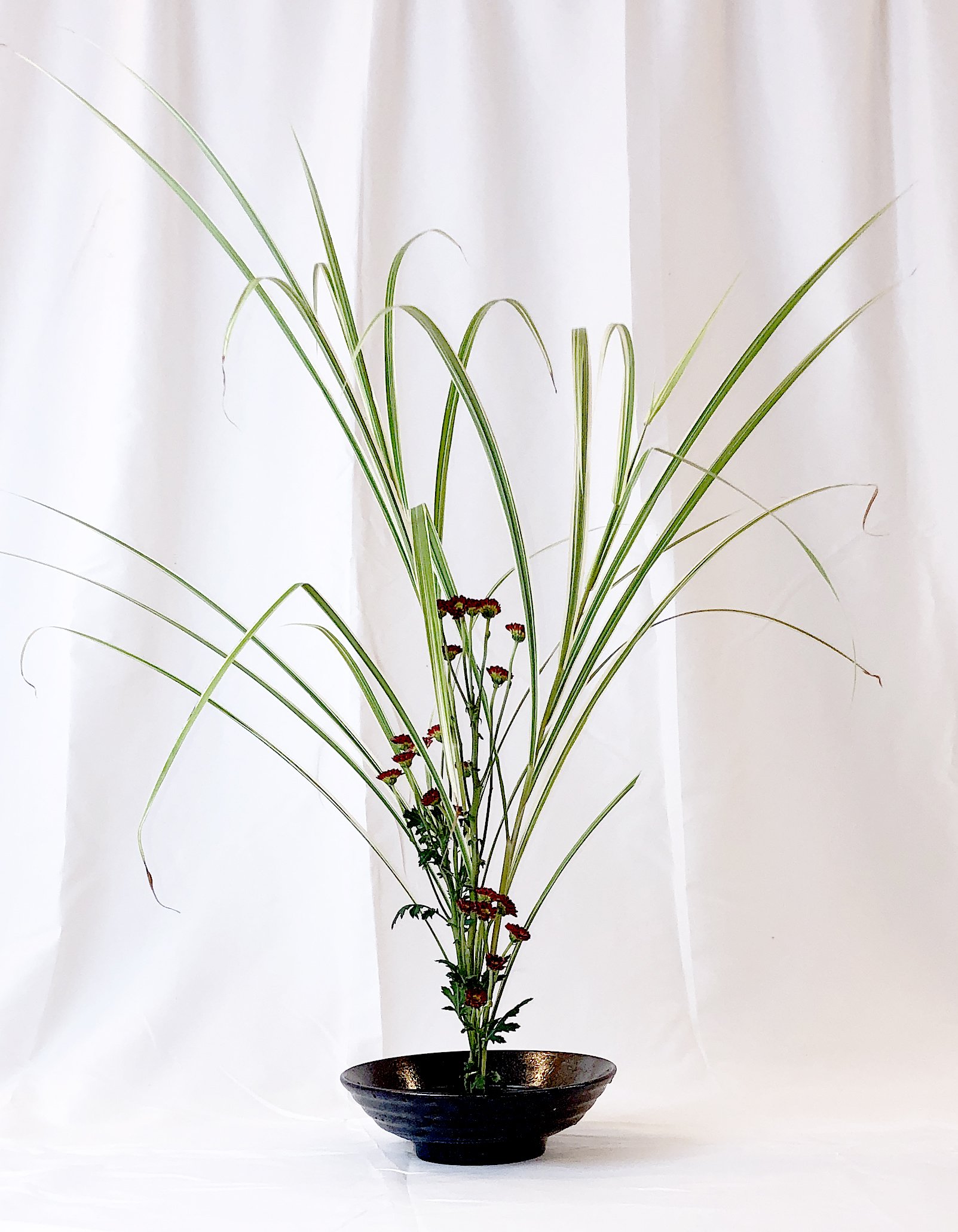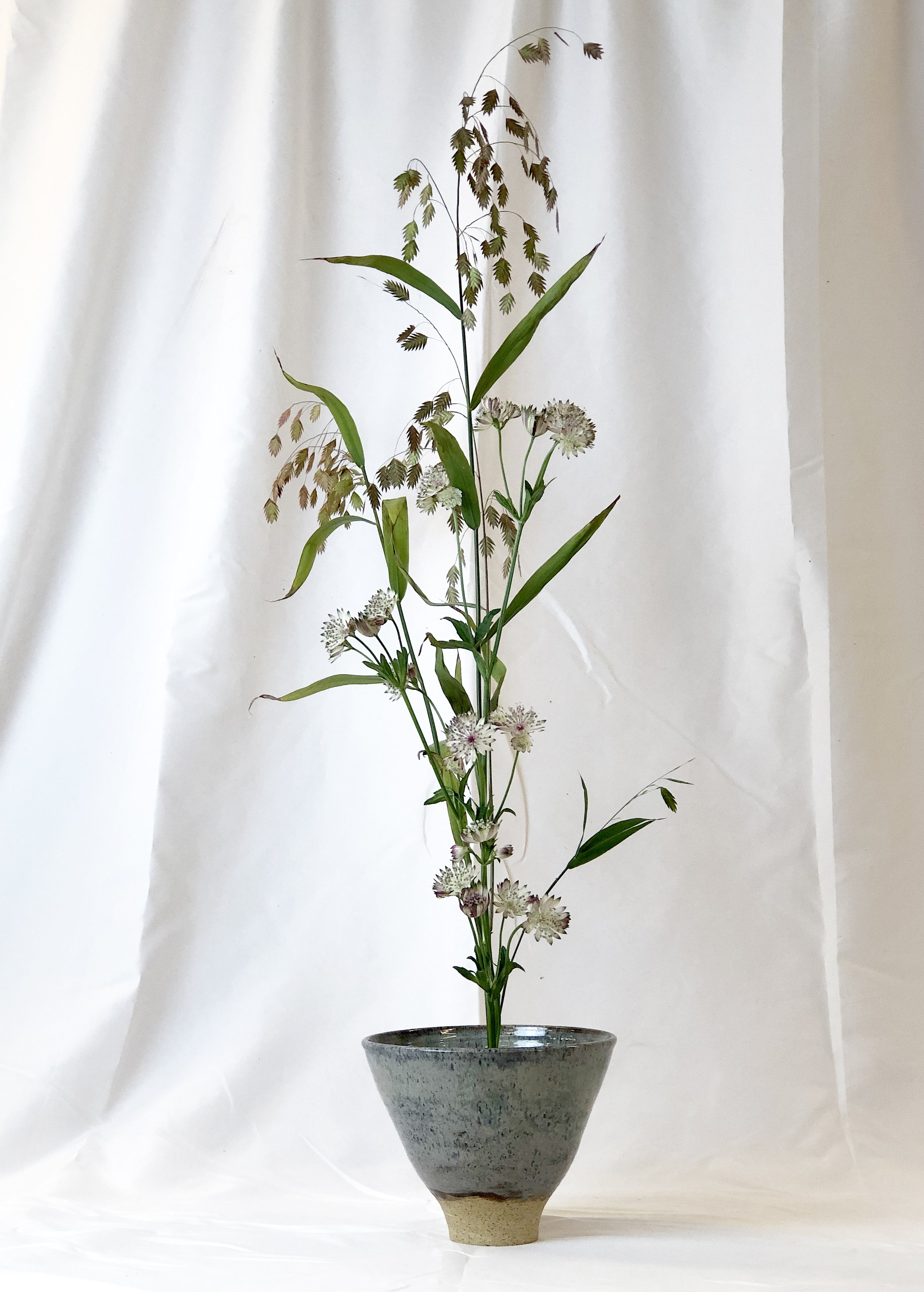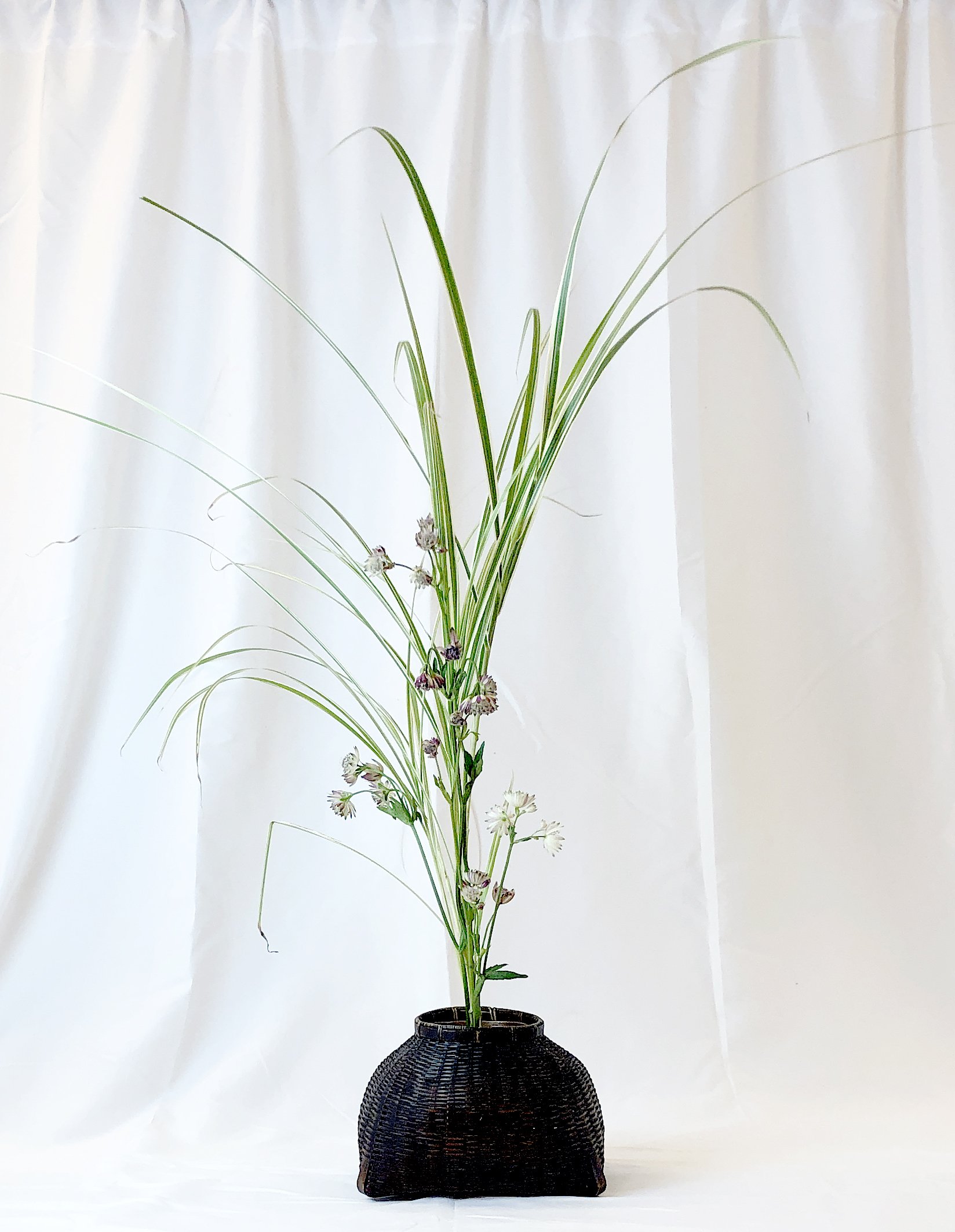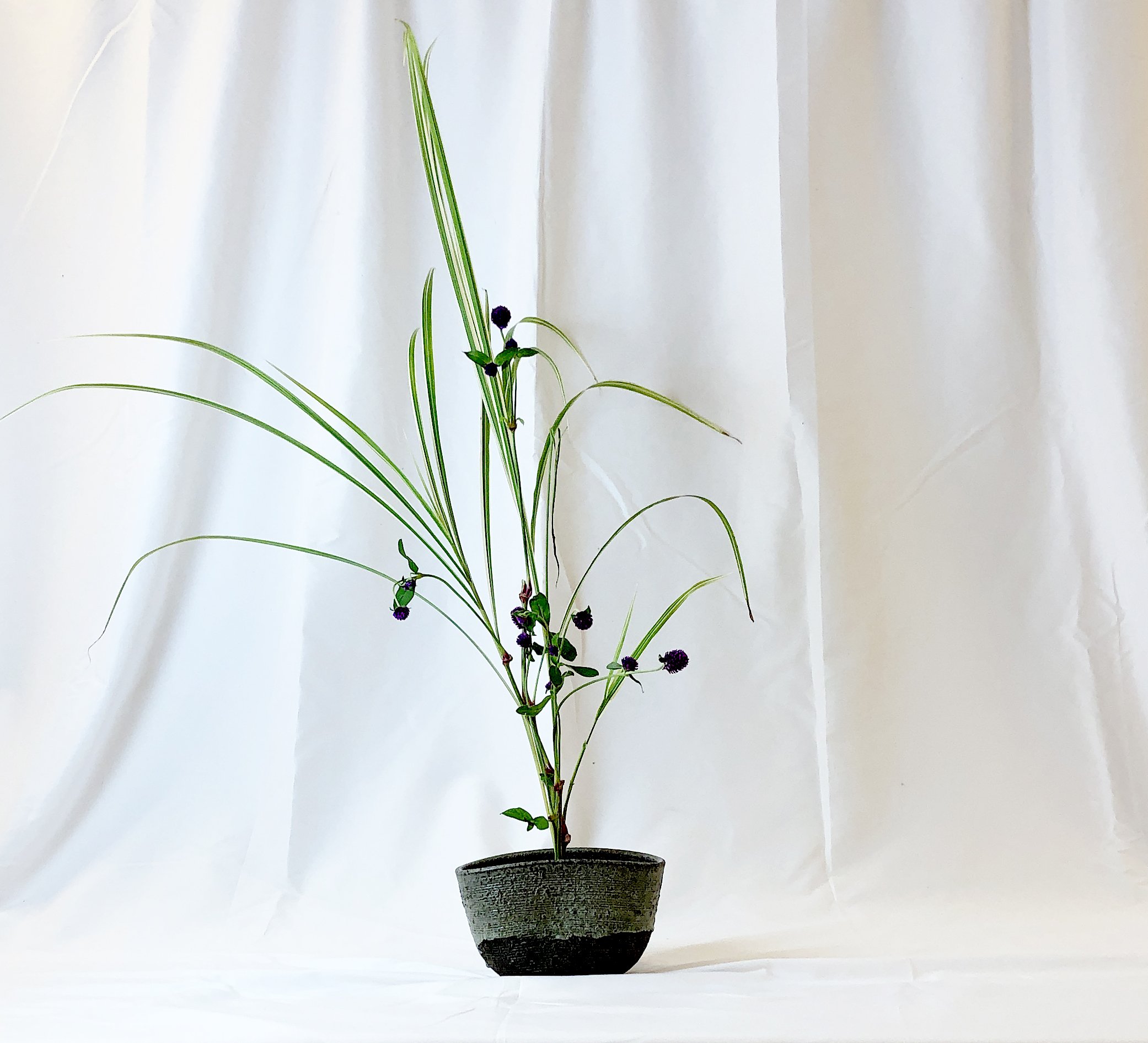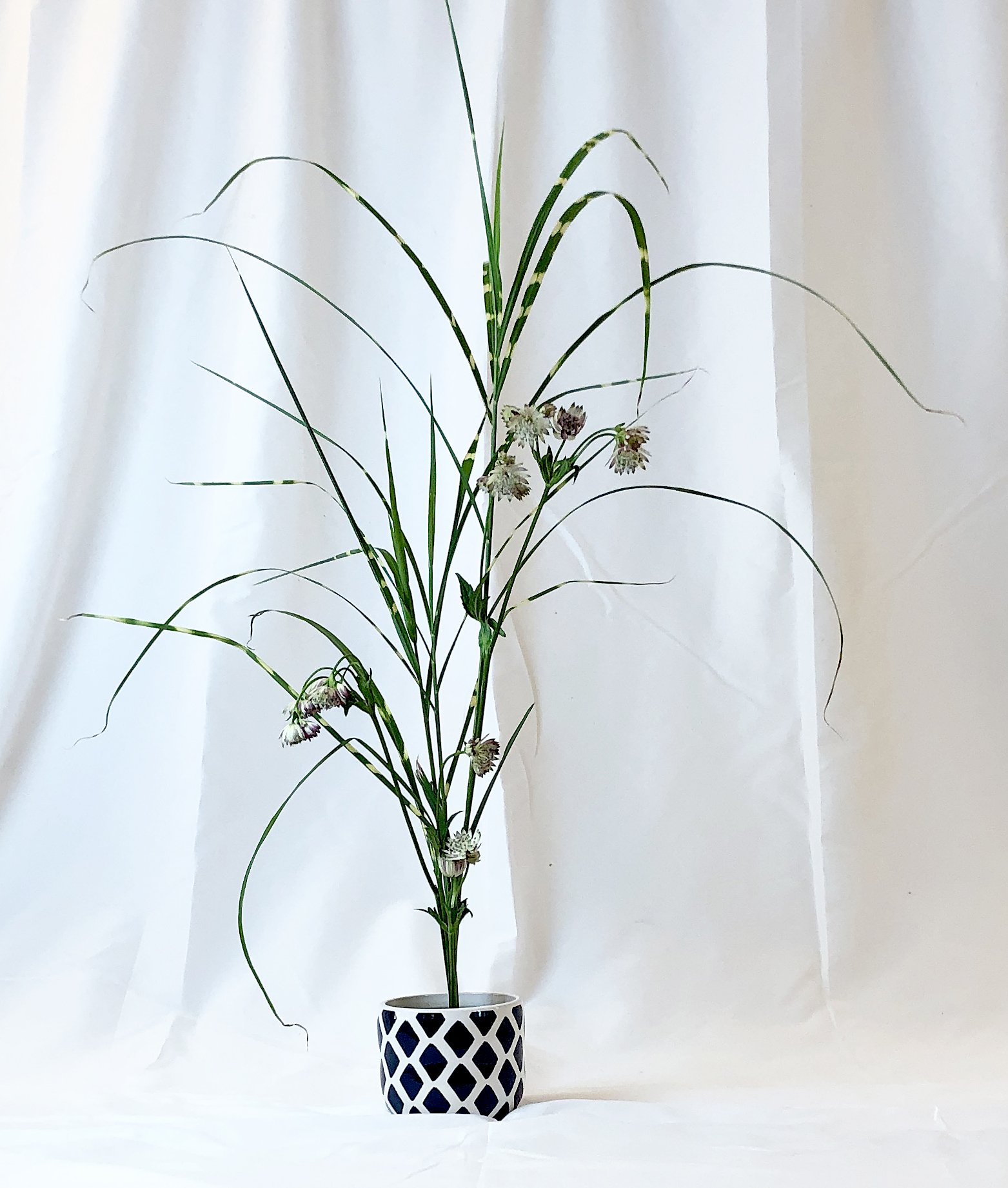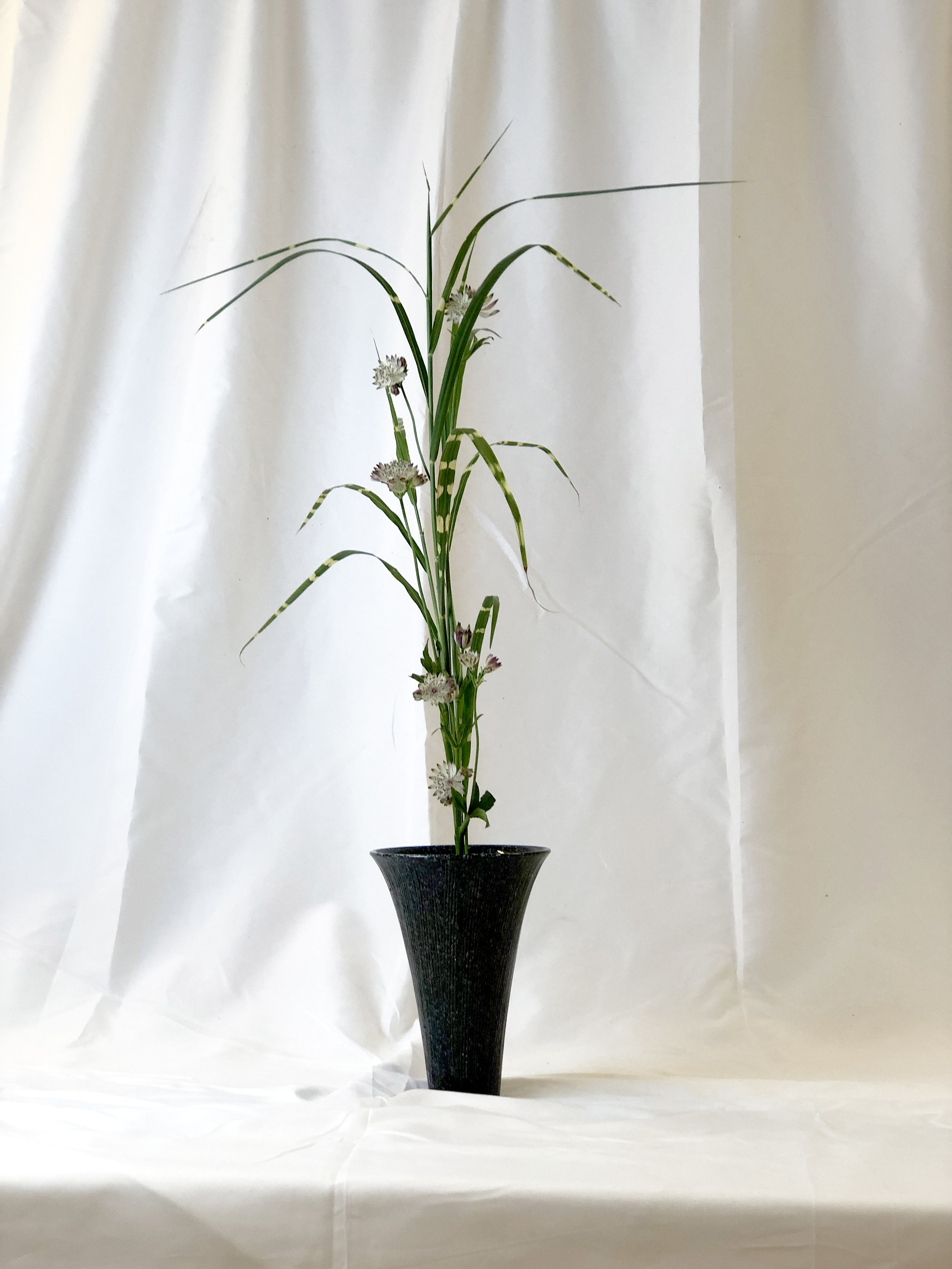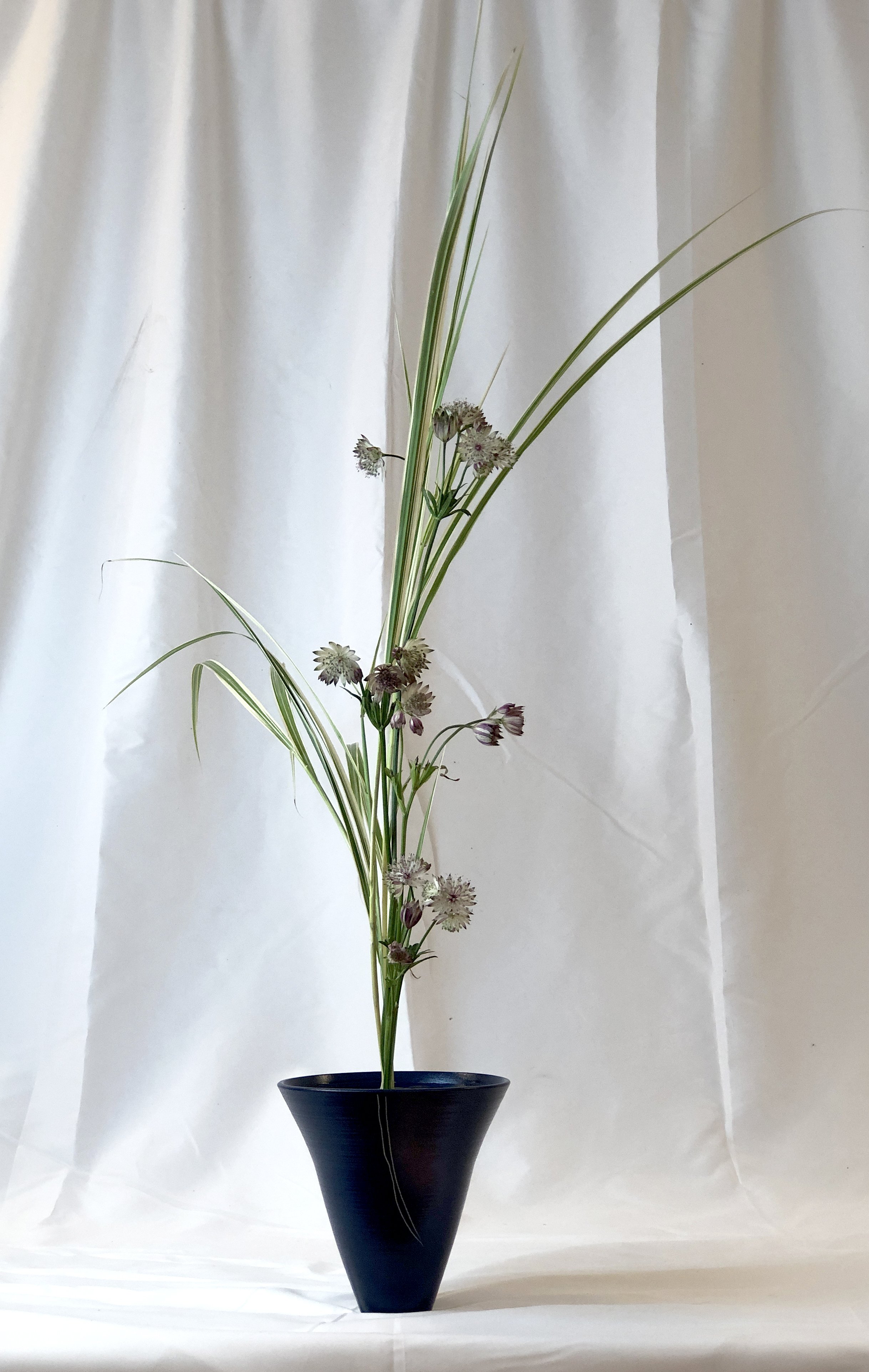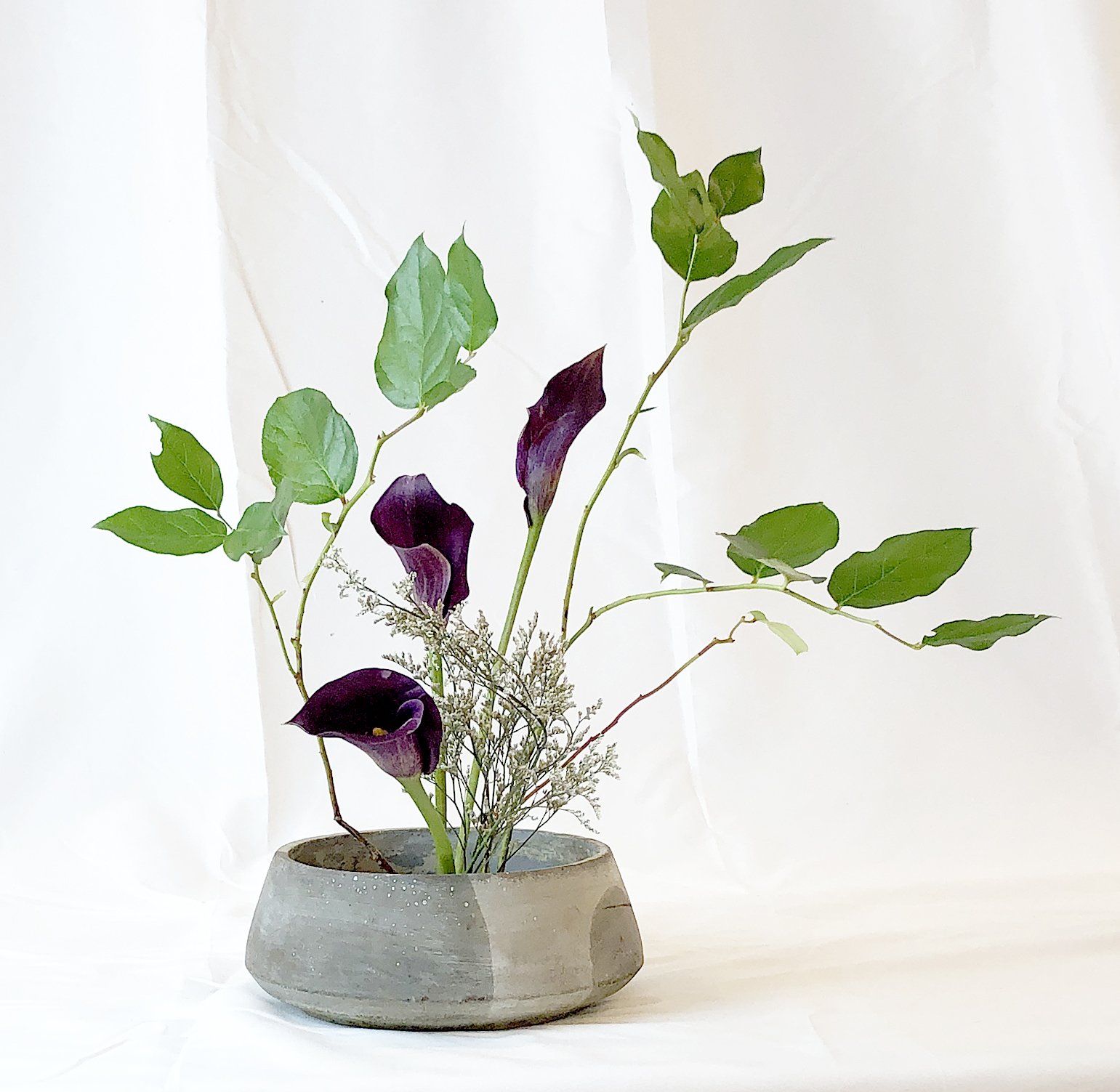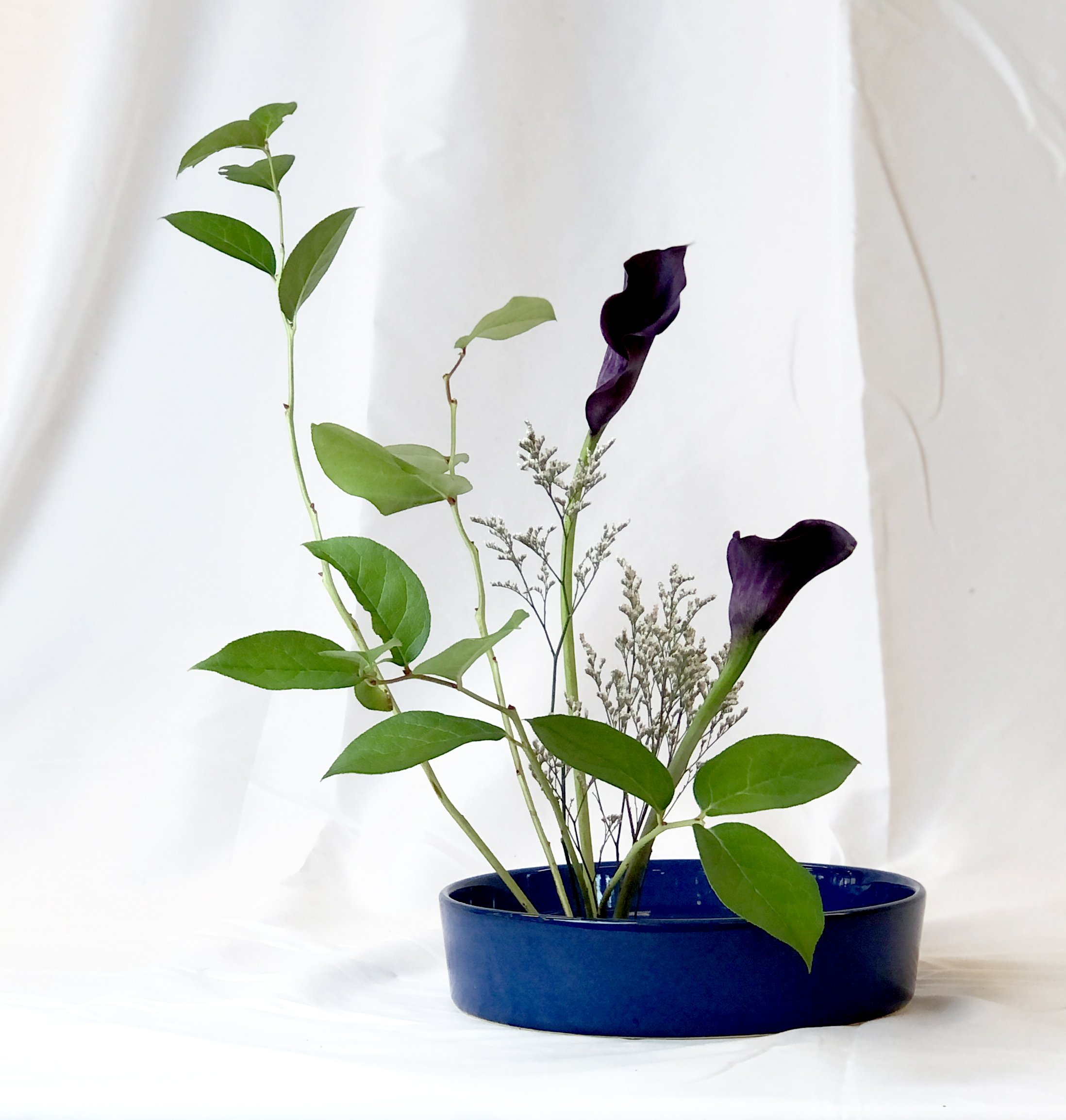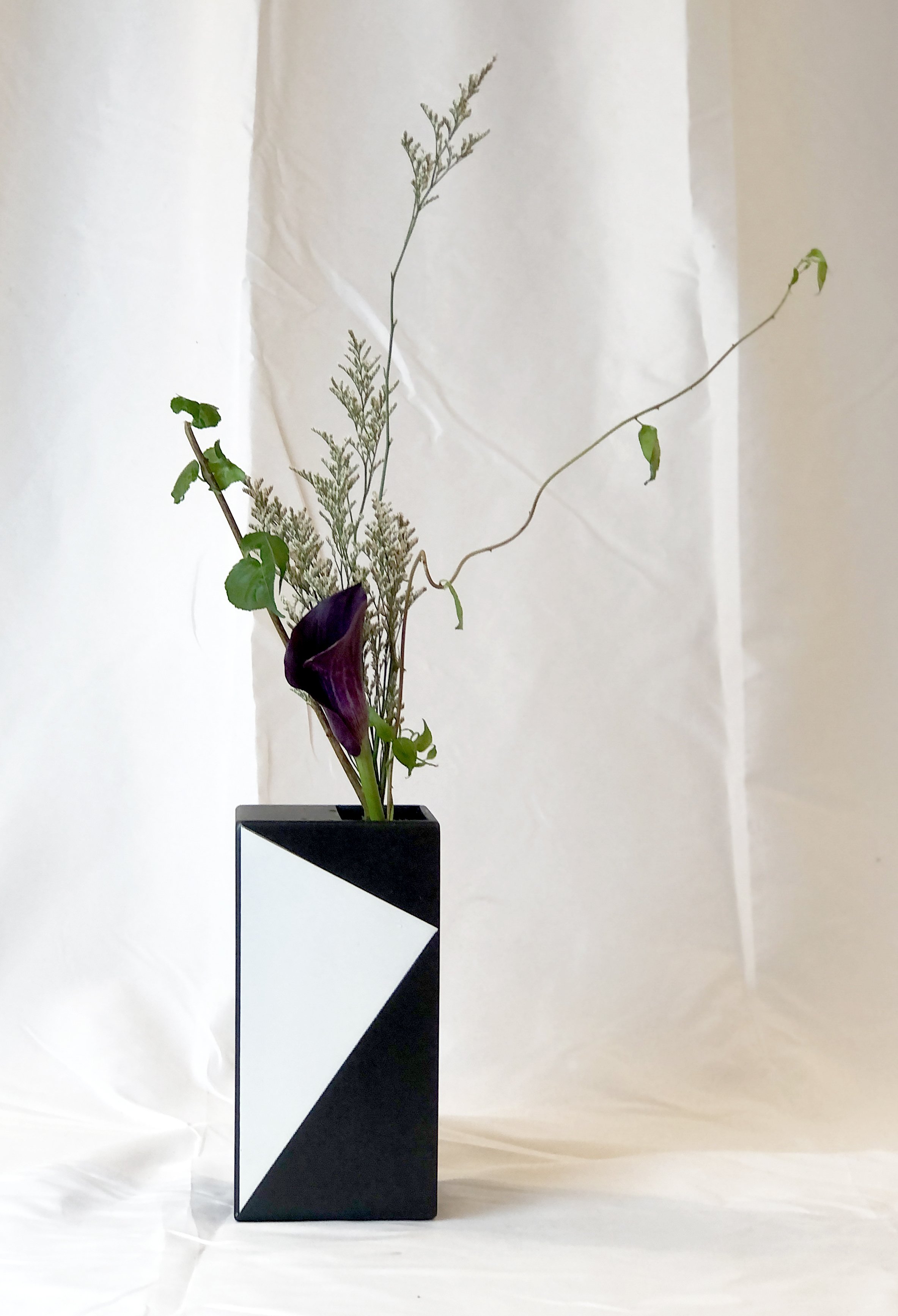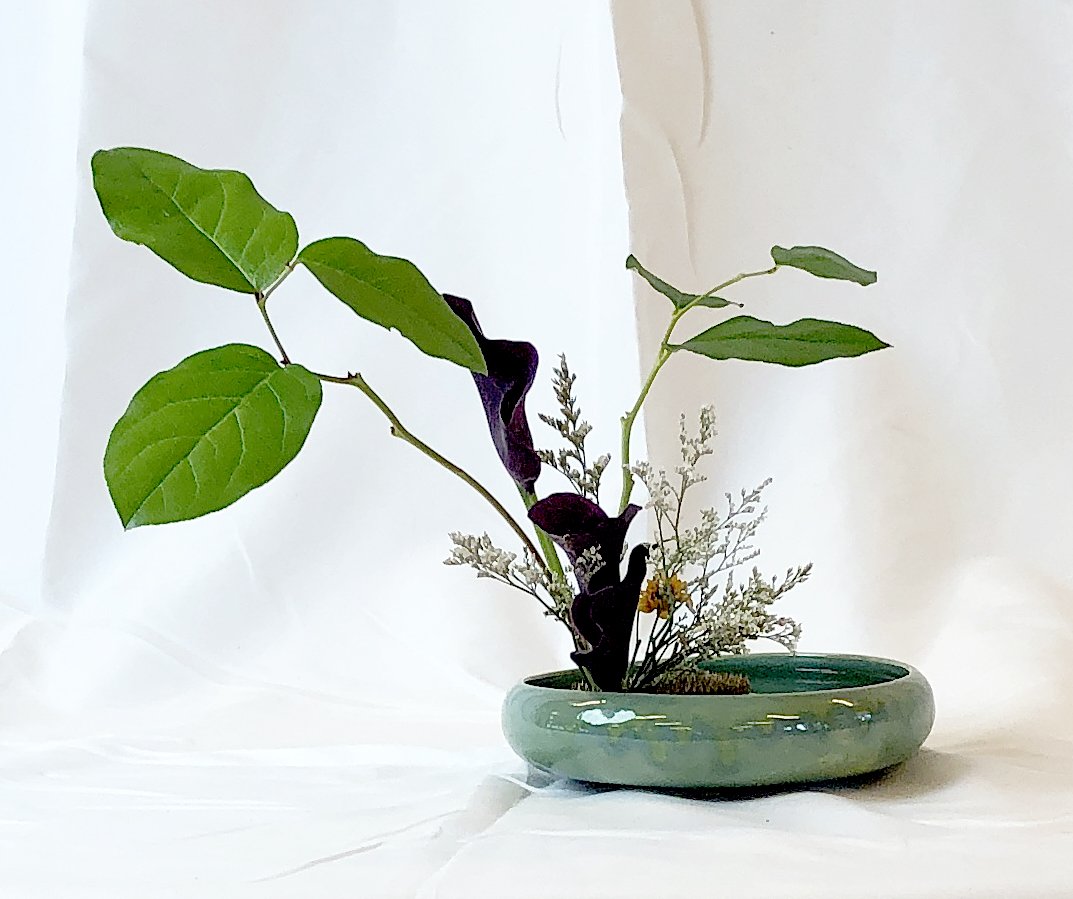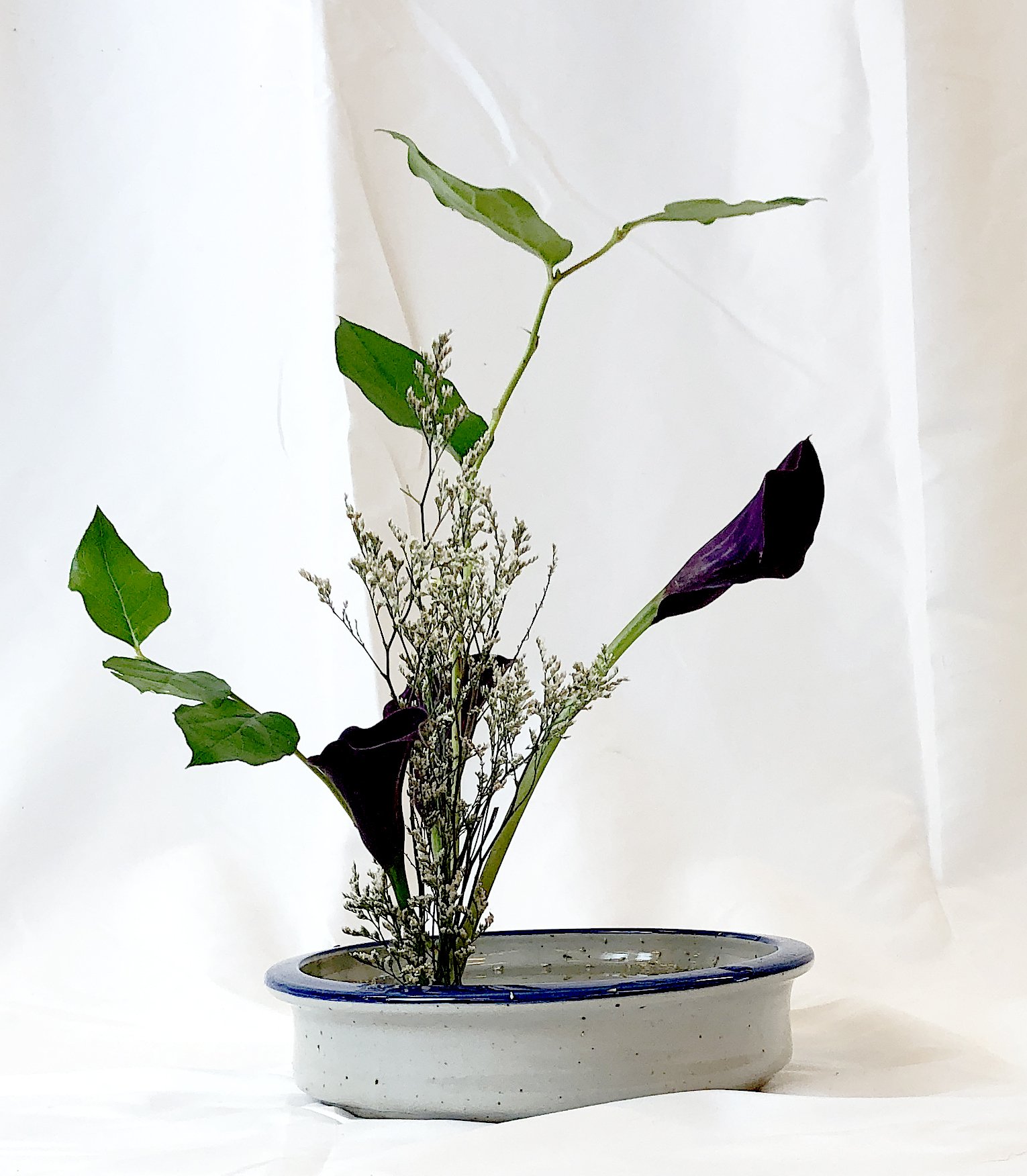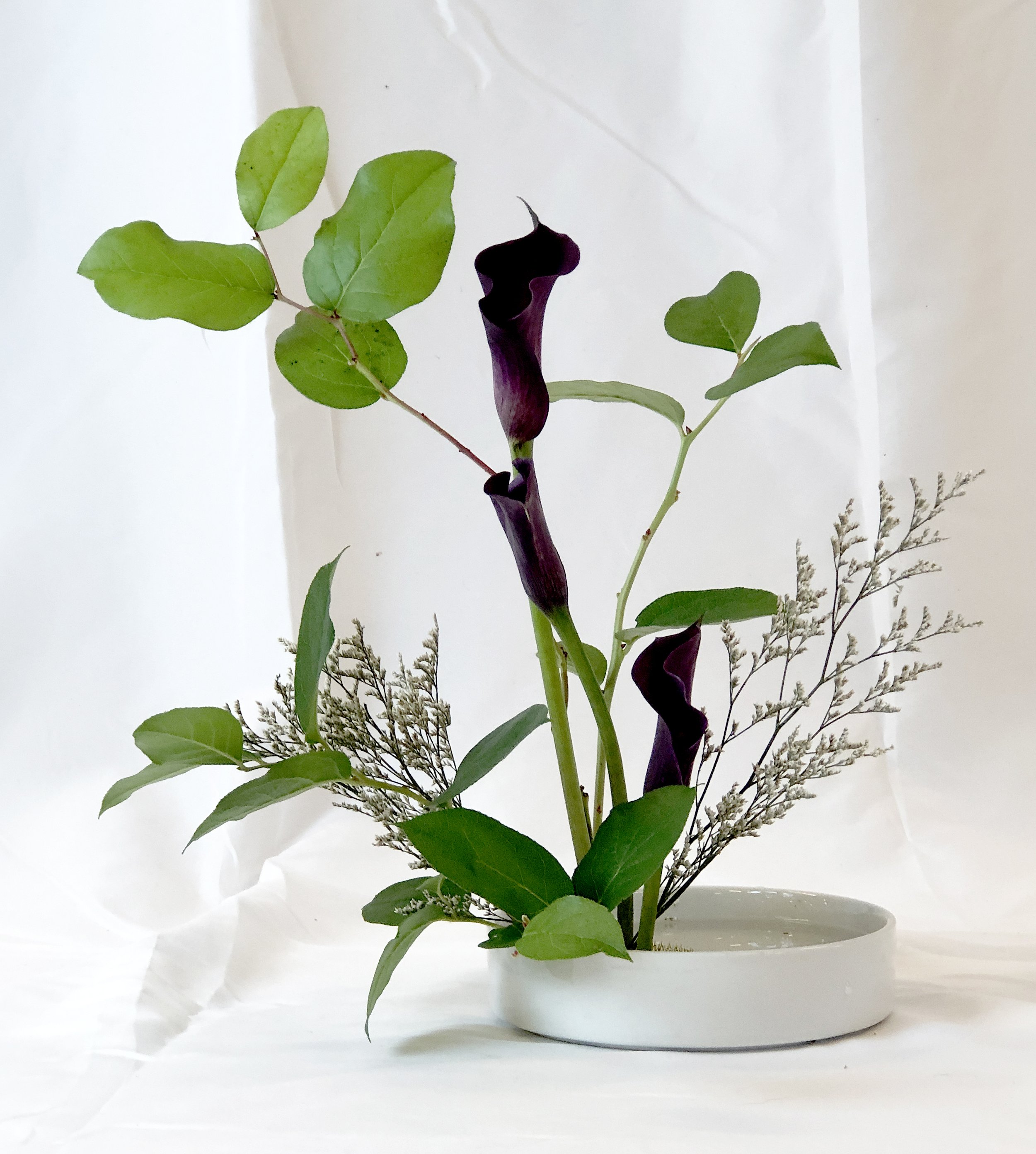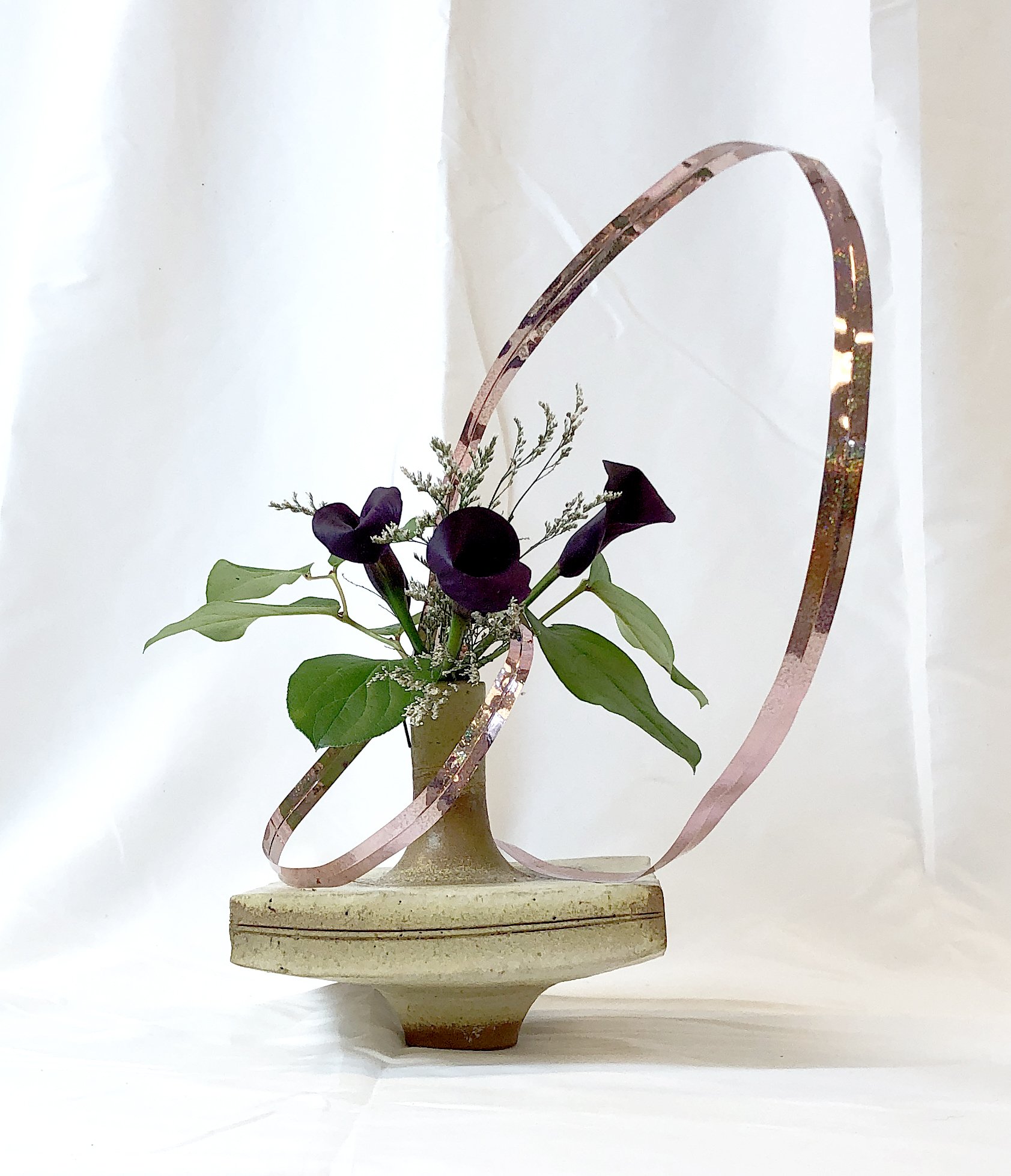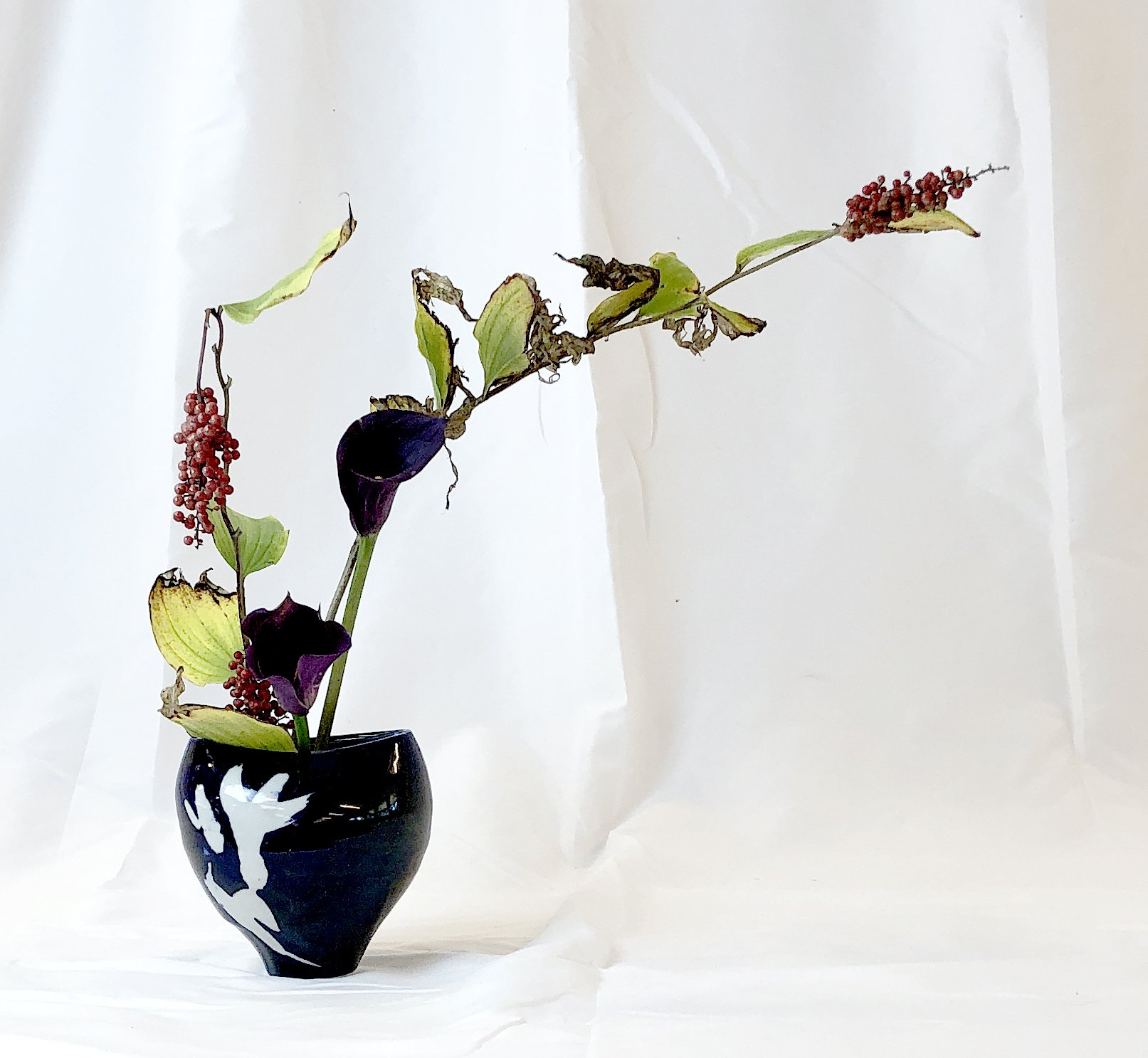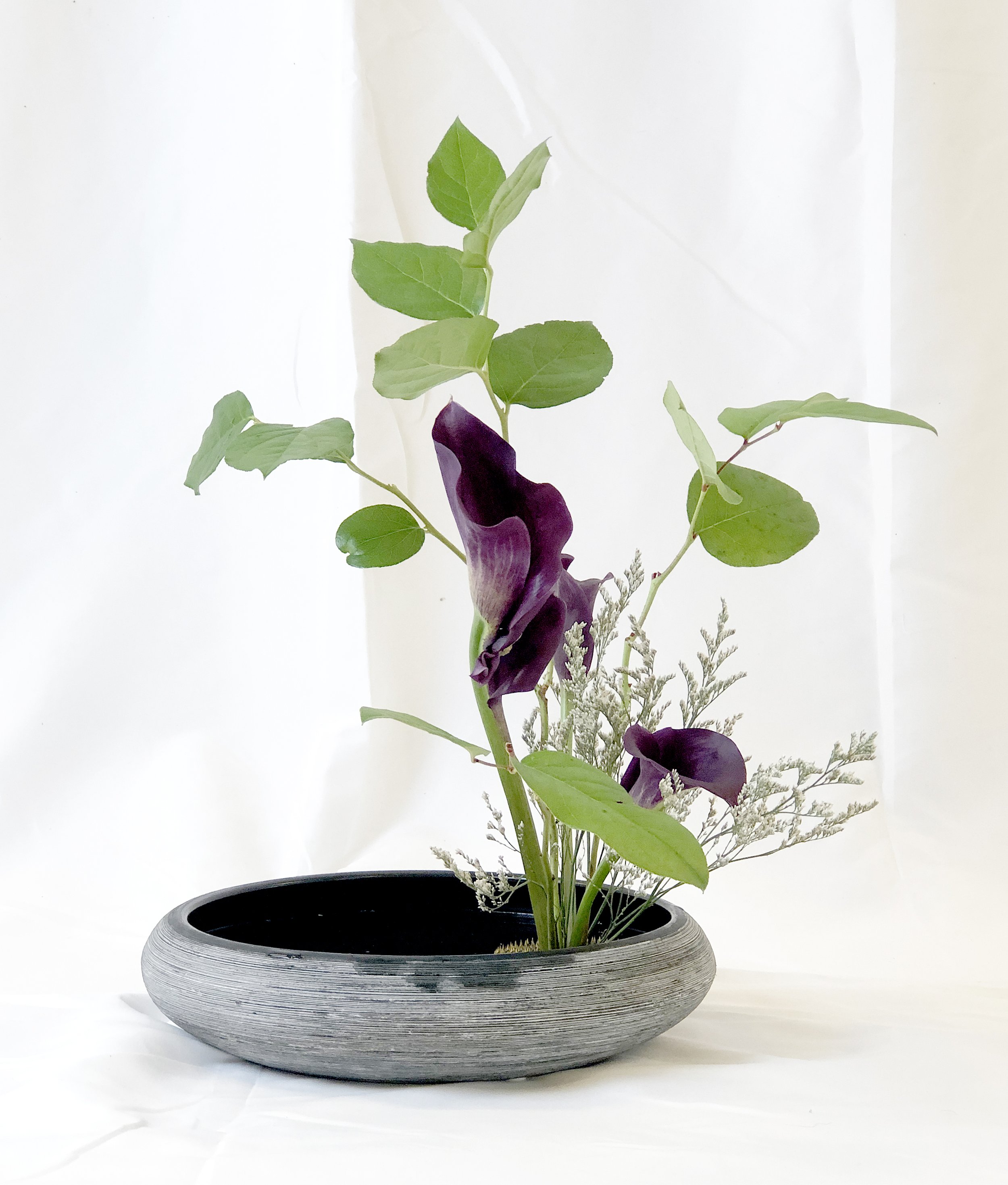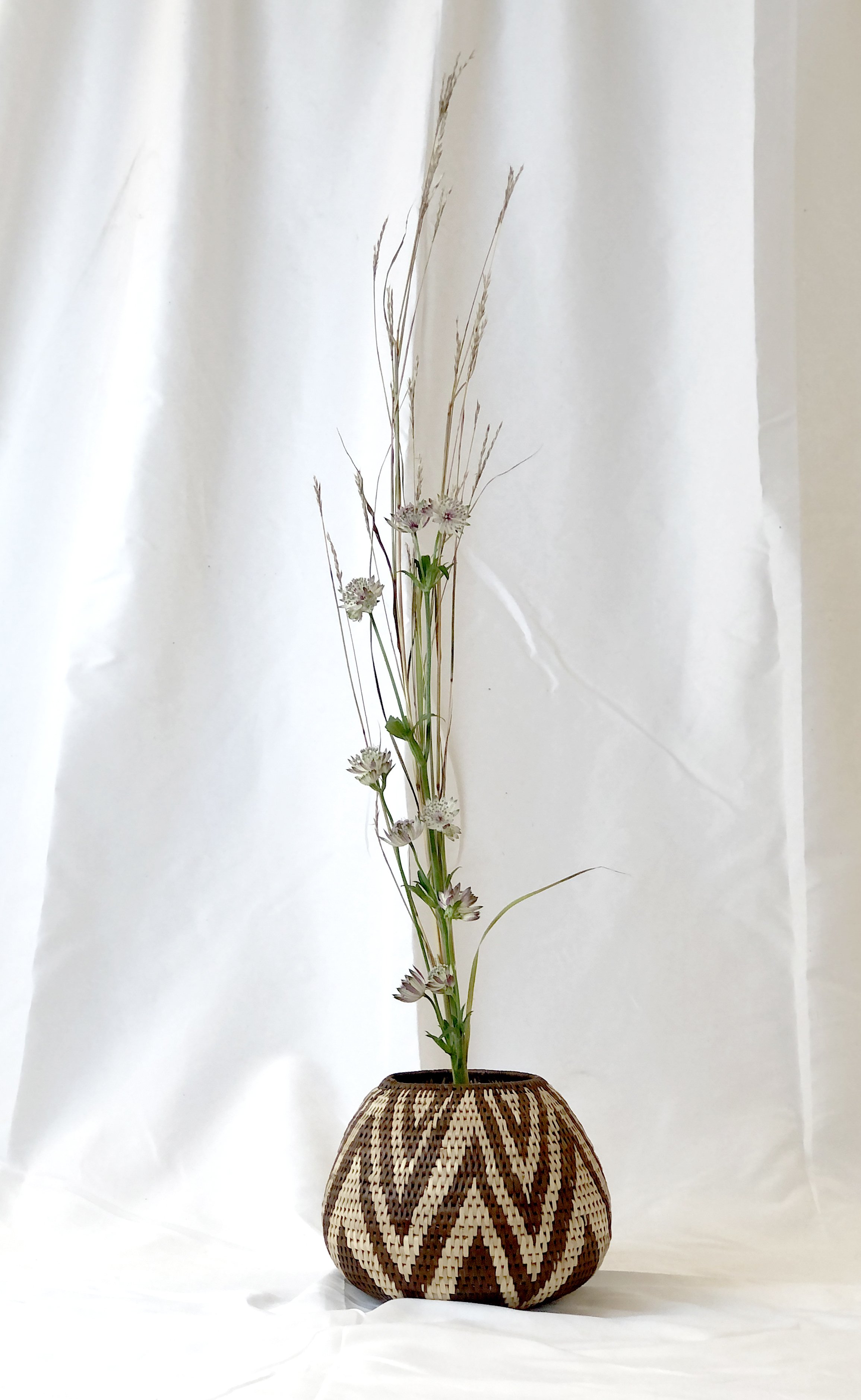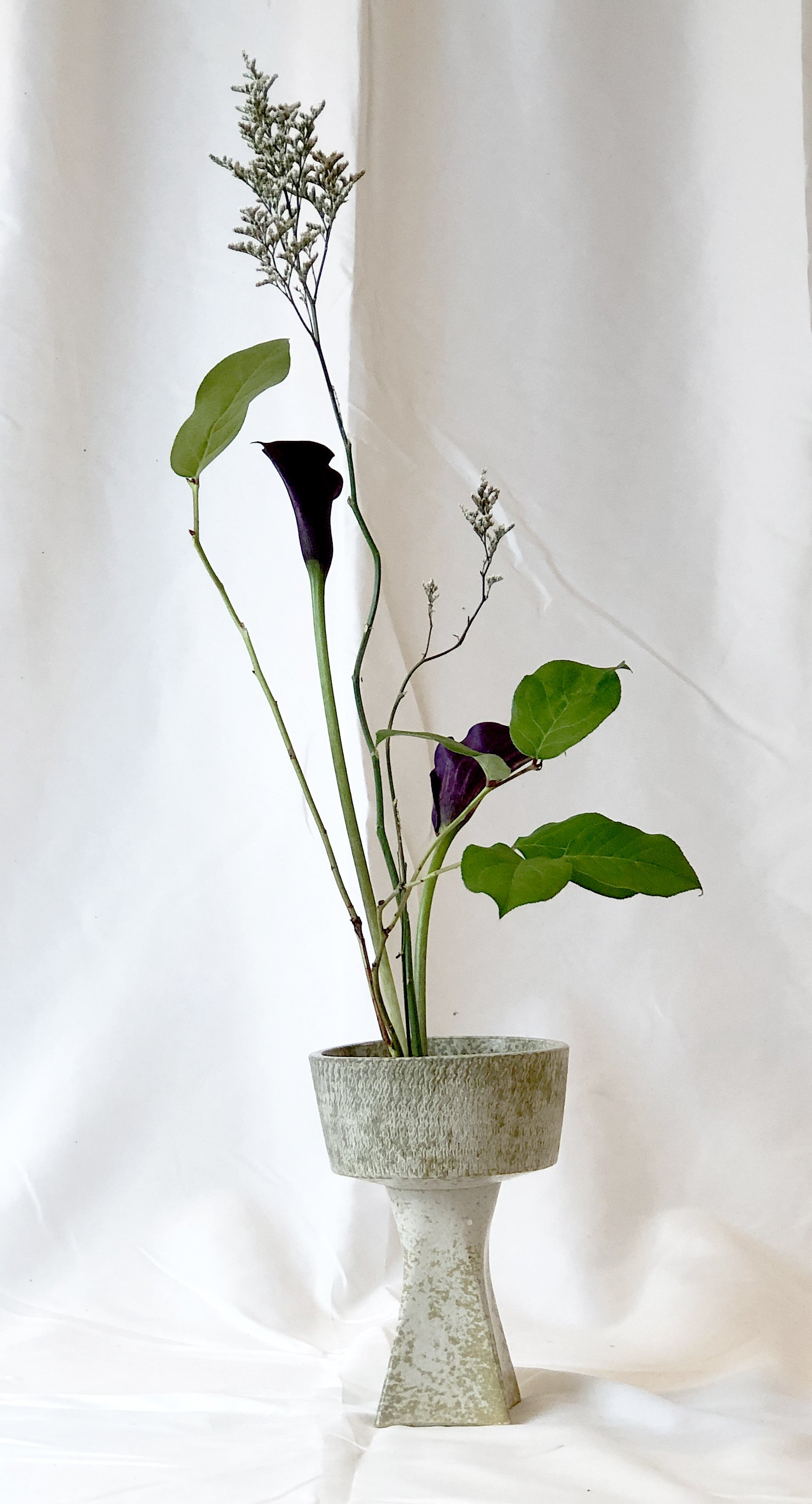Maze-Ike and Jiyuka
Maze-Ike
Joanne Wimberly
Maze-Ike (mixed flowers) is a variation of shoka nishuike. A maze-ike arrangement is meant to reflect an image of a beautiful autumn meadow after a long summer of growth. There is such a profusion of flowers and grasses that it appears they are growing into each other with stems intertwining. Unlike traditional nishuike where one material is used for shin and soi and the second is used for tai (nejime), maze-ike has both materials appearing in shin, soe and tai groups. The arranger decides which material should be dominant.
You may use grasses and flowers or two types of flowers. Grasses are placed to the rear of the kenzan and flowers to the front. If using two types of flowers, the taller variety is placed in the rear of the kenzan and the shorter in the front.. The materials mix naturally at the top..
A basket or pottery container is suitable, though baskets tend to look better with light materials such as grasses and wildflowers
Jiyuka
Masumi Ichikawa Naylor
Ikenobo Jiyuka (Free Style), Natural Expressions
What is “Jiyuka”? —Jiyuka put plants at the core of the composition, allowing one to express and arrange flowers freely. Jiyuka has no set patterns but has two distinct expressions:
1. “Natural Expressions” that make use of the natural appearance of plants.
2. “Designed Expressions” that make use of design elements and can also use
materials other than plants. (Plants have to always be the “Main.)
Three key learning points for Ikenobo Jiyuka:
1. Observe the floral material carefully and discover its beauty.
2. Appreciate plants as living things and discern their inner beauty, from which
observers may perceive the expressive intention.
3. Organize the plants as a work while making the most of the beauty found within them.
The word “free” in Jiyuka does not indicate “freedom of design”. It means “freedom of expression”.
Floral materials have many different elements, so it is difficult to structure a work via a single element. We can focus elements of floral materials—line, surface, point and mass—on certain portions of a material such as a leaf, stem, bud, flower or berry. Elements in Jiyuka structures include shape, color and texture.
Someone says Ikenobo ikebana is the “beauty of subtraction”. Simplification can serve to clarify expression of the beauty of plants:
-Removing unnecessary elements to highlight the focused element
-Refraining from adding arrangements superfluous for expression
-Providing adequate space between floral materials to enhance the beauty of plants
-not by filling the blank space with other floral materials, but by differentiating the intensity of materials.
Everyone’s work is different, even if the same floral materials are used, depending on the arranger’s personality, his/her theme or purpose. And after all, the most important thing is ENJOY!
Vases for Jiyuka:
-Original vase created especially for “An Introductory Free Style Curriculum”
-Suiban
-Vase with Kenzan or appropriate Hanadome (items keep/hold flowers in a vase like Oasis, etc.)
-No typical Shoka Vase, please
